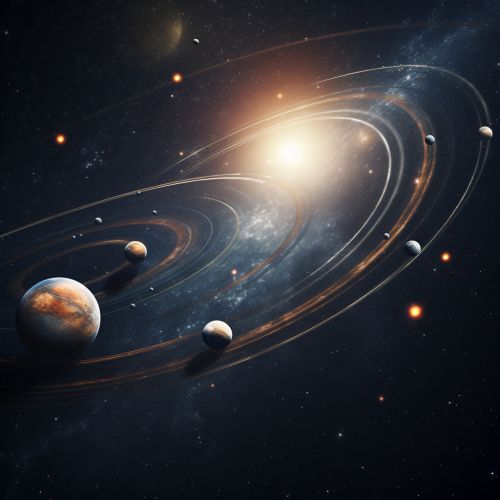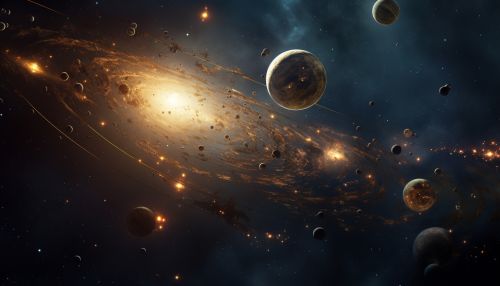Celestial Mechanics
Introduction
Celestial mechanics is the branch of astronomy that deals with the motions of celestial objects. The field applies principles of physics, particularly Newton's laws of motion, to astronomical objects such as stars, planets, and moons to determine their past and future positions in space.


History
The study of celestial mechanics has a long history, dating back to antiquity. Ancient civilizations such as the Babylonian, Greek, and Chinese cultures made significant contributions to early understanding of the heavens. However, it was not until the work of Kepler and Newton in the 17th century that celestial mechanics began to develop as a modern science.
Kepler's laws of planetary motion
Kepler's laws of planetary motion, derived from observations by Brahe, describe the motion of planets around the sun. The first law, known as the law of ellipses, states that planets move in elliptical orbits with the sun at one focus. The second law, the law of equal areas, describes how a planet's speed varies along its orbit. The third law, the harmonic law, relates the planet's orbital period to its average distance from the sun.
Newton's law of universal gravitation
Newton's law of universal gravitation, published in his work Principia, provided a universal explanation for the force that drives celestial motion. According to this law, every particle of matter in the universe attracts every other particle with a force that is directly proportional to the product of their masses and inversely proportional to the square of the distance between their centers.
N-body problem
The n-body problem, a key problem in celestial mechanics, involves predicting the individual motions of a group of celestial objects interacting with each other gravitationally. Solving this problem has been a central goal of celestial mechanics.
Orbital mechanics
Orbital mechanics, a subfield of celestial mechanics, focuses on the motions of artificial satellites and spacecraft. This field applies the principles of celestial mechanics to enable the navigation of spacecraft to other planets and moons, and to place satellites in precise orbits around the Earth.
Perturbation theory
Perturbation theory is used in celestial mechanics to calculate the effects of small disturbances, or perturbations, on the motion of celestial bodies. These perturbations can be caused by the gravitational influence of other bodies, the pressure of sunlight, or other forces.
Modern developments
Modern developments in celestial mechanics include the study of chaotic behavior in the solar system, the discovery of extrasolar planets, and the exploration of the outer solar system by spacecraft. The field continues to be a vibrant area of research, with new discoveries and theories continually expanding our understanding of the universe.
